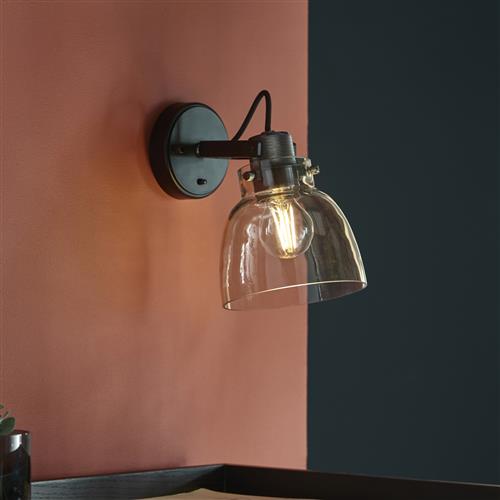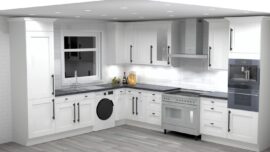Matthew Currington, technical director of The Lighting Superstore, reveals the most common mistakes people make with wall lights and explains how to perfectly place them to maximise their effectiveness in each room of their homes.
Wall lights, or sconces, are crucial in interior lighting design. They are perfect for creating ambient light and are more space-efficient than table and floor lamps. These fixtures can produce cosy pockets of light that large ceiling lights often fail to provide. However, poor placement and style choices can diminish functionality and aesthetic appeal.
A common error is installing lights at an incorrect height. Lights placed too high or too low create an awkward void below or above them.
For optimal light distribution, wall lights should typically be mounted between 150-180cm from the floor, avoiding direct eye level. However, this may need adjustment in rooms with exceptionally high ceilings.
Overcrowding wall lights can lead to a cluttered appearance. It is better to focus on strategic placement, ensuring each light has a clear purpose, such as highlighting art or providing ambient light near a dining sideboard.
Select lights that complement the room’s décor, enhancing the overall design and maintaining a cohesive flow. The colour of the lightbulb also significantly impacts the room’s atmosphere. For instance, bright white lights are ideal beside a bathroom vanity mirror but less so near a bed. As rooms serve different purposes, the positioning and direction of wall lights should reflect this. Here are some top tips for various rooms in your home:
#1 Living room
In living rooms, wall lights are often installed in pairs flanking a fireplace, bookshelf, artwork, or sofa to achieve balanced ambient lighting. When positioning wall lights above furniture, consider the proportions of the item.
For instance, a large console table with a single wall light appears unbalanced. Instead, use three lights evenly spaced along the console table’s length to create balance.
#2 Bedroom
Wall lights next to a bed are excellent for saving space on bedside tables and providing ambient light for evening reading. However, placing them too low and close to the bed can be hazardous.
Proper positioning is essential to ensure the lights are easy to reach yet high enough to effectively distribute light for reading. If the lights are too low, they will cast light unhelpfully onto the bed and floor.
Some prefer traditional wall sconces with decorative shades, while others might opt for modern, extendable options. Wall lights with string pull switches are particularly convenient beside a bed as they are easier to access.
#3 Bathroom
The key factor here is the Ingress Protection (IP) rating, indicating a light fixture’s resistance to moisture, depending on the bathroom zone.
For instance, within the bath or shower area (zone 0), a low-voltage light with an IP67 rating is necessary. For lights above the bath or shower up to 2.25m (zone 1), an IP65 rating is required. Fixtures within 0.6m of the bath perimeter or 60cm of a tap or basin (zone 2) need at least an IP44 rating for splash resistance. Outside these zones, no specific IP rating is mandated.
#4 Hallway
Placing wall lights evenly along a hallway ensures uniform lighting, ideal for highlighting artworks or architectural details and adding elegance to transitional spaces.
Choose slim fixtures to prevent the hallway from feeling cramped. Consider your goals for these lights—directing light upwards can enhance the perceived size of the space.
For a gallery-like effect, place wall lights above artwork to draw attention and create a focal point.
#5 Dining Room
In the dining room, a dimmable chandelier light positioned in the middle of the dining table lends a dramatic feel. But complementing this with well-positioned dimmable wall lights is a great way to enhance the room’s elegance, especially as there are so many styles to choose from.
Use these wall lights to frame an entrance, buffet console table or fireplace, adding sophistication, charm and ambience.
#6 Home office
A home office should be both functional and cosy. Wall lights can enhance this warmth, supplementing desk lamps and reducing the need for an overbearing central light. If a writing desk is placed up against a wall, a horizontal sconce that directs light downwards is ideal if positioned above it, adding both a decorative and functional touch.
In a home library, decorative wall lights mounted on the vertical dividing beams of the bookshelves can add warmth and create the ideal reading spot, with an armchair positioned underneath.






